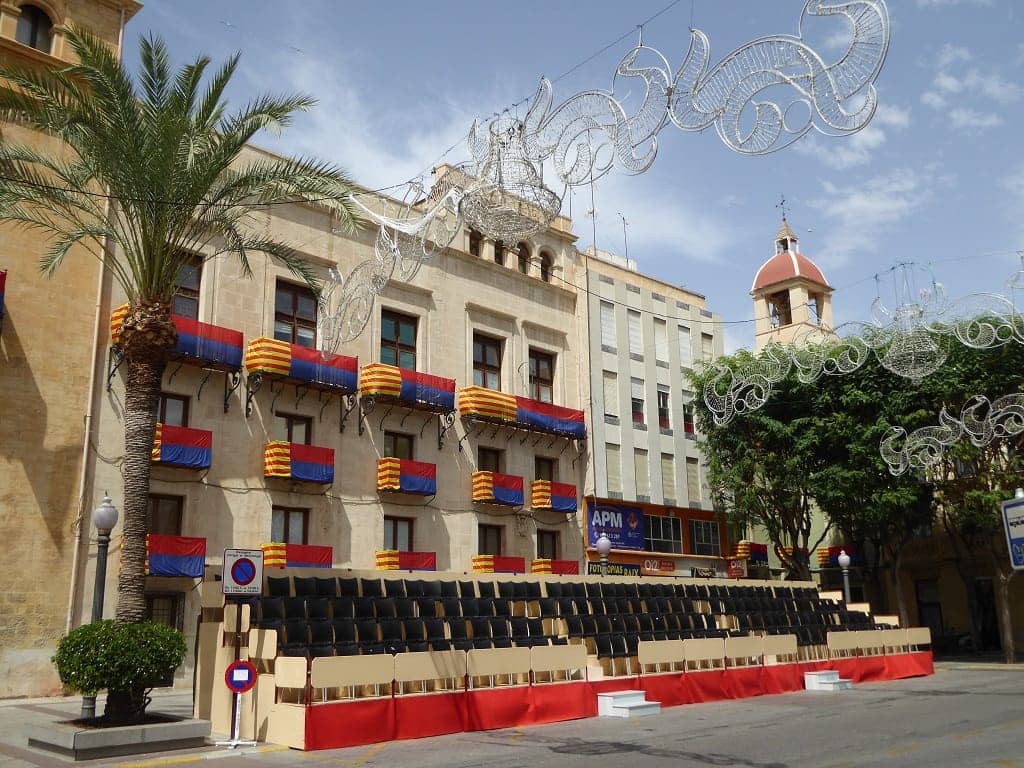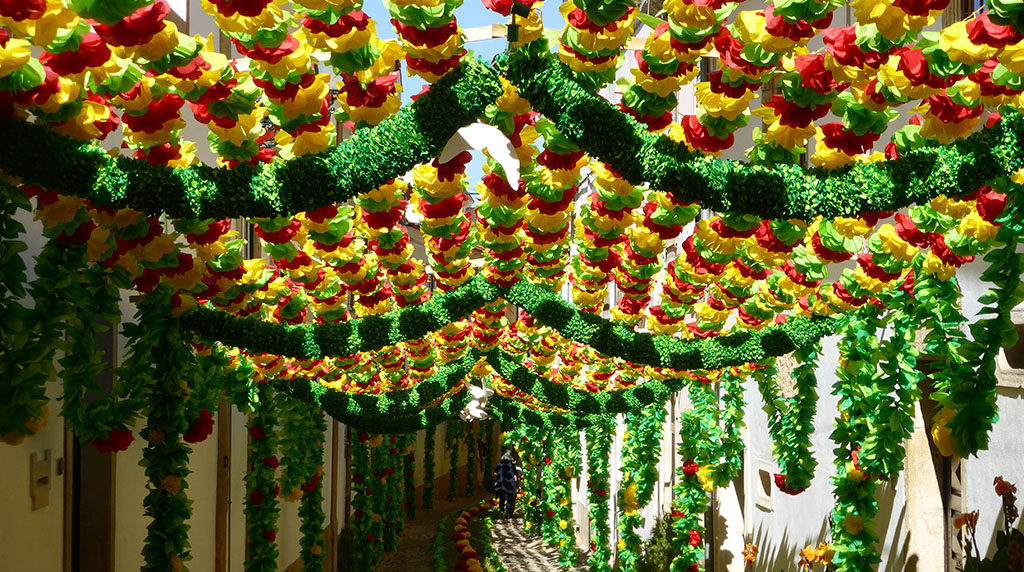The next morning at 10 am a funeral procession followed, with a statue of the Mother of God carried through the old district. Among the participants were choir singers, actors and hundreds of locals.
In the early evening, at 6 pm the second part of the Mystery (La Festa - The Feast) took place in the Basilica. I confess that I watched the live broadcast on television, I didn't feel like sweating again in the church which was crowded even more.
Again, I won't go into detail, just briefly. The play began with the burial of Mary, interrupted by a group of protesting Jews. When one of them tried to touch her, he remained paralyzed.
Seeing the miracle with their own eyes; the Jews believed in Mary's sanctity and were baptized, after which the paralyzed man was able to walk again. Together they buried the body in white robe quilted with gold in the tomb.
Just then the organ thundered and the aerial device entered the scene. It was again Araceli with five angels who took Mary’s soul to heaven the day before. Now, they were slowly descending from the dome and singing; they were coming for her resurrected body. The Chief Angel left the apparatus; he was replaced by the statue of Mary - without a mask; with open eyes, ready to enter the kingdom of God. At sweet cherub ́s singing, the device began to rise; when suddenly a doubting Thomas ran in. He saw, believed and asked for forgiveness...
When the group was in the middle of the way, the organ roared once more and another apparatus appeared under the ceiling! While the first stayed hanging in space, high above the viewers, the second was decreasing. The man sitting on the throne and two children on his sides represented the Holy Trinity, bringing the crown. They stopped a few meters above Mary, and whereas the angels were sprinkling tinsel that was falling on spectators like small stars; the Heavenly Father slowly lowered the brilliant crown.
When it landed on the Mother of God's head, the audience broke into a several minutes lasting applause and shouting "Long live to Mary!"
The basilica resounded with the majestic singing of Gloria Patri; people cried and even angels were wiping their eyes… The performers, dangling under the sky-blue dome, enjoyed the play’s moving climax, and then began to ascend. The last rumbling of the organ and Mary with her entourage ascended to heaven. The sky closed again for a year, the Mystery was over...














































































